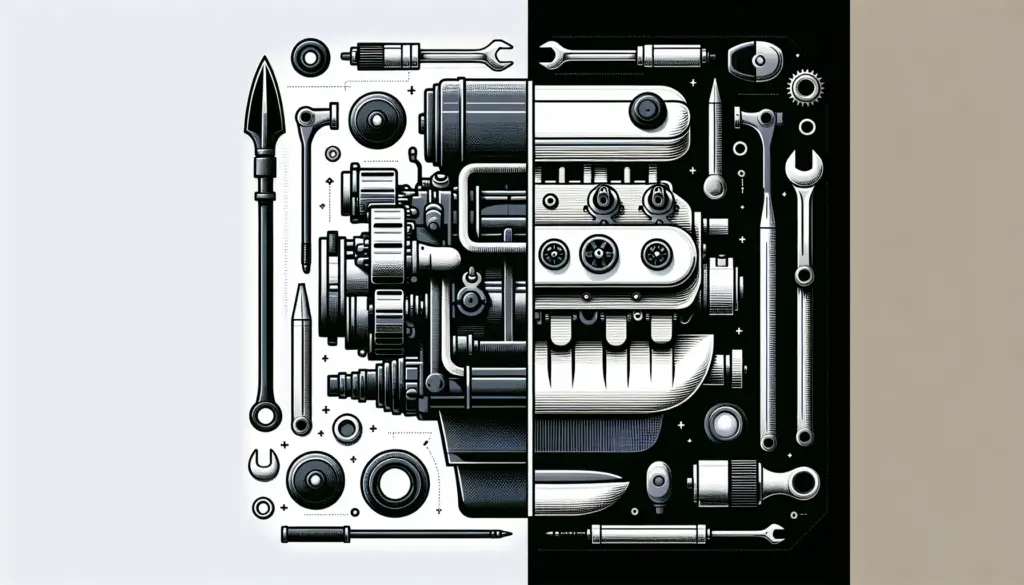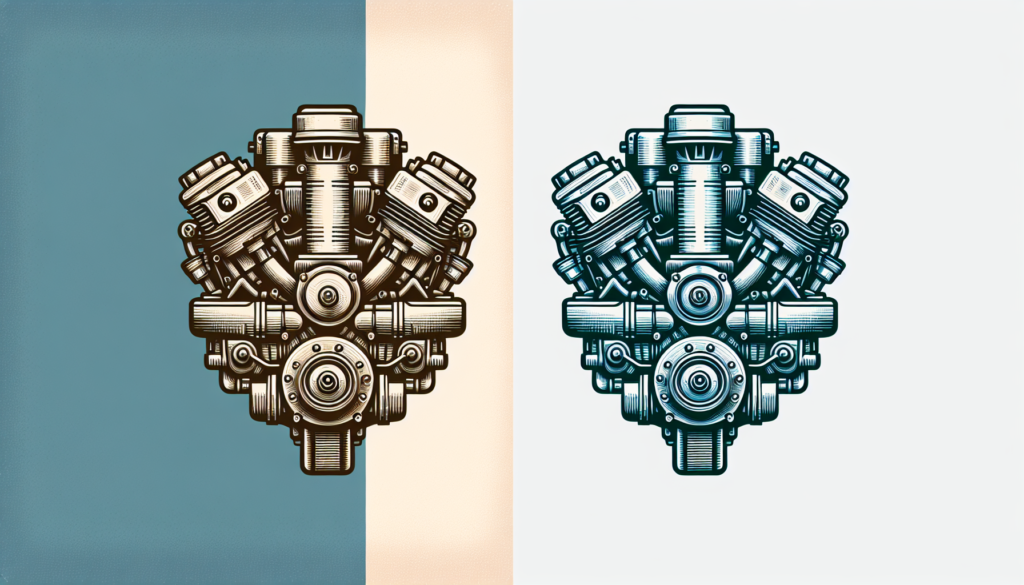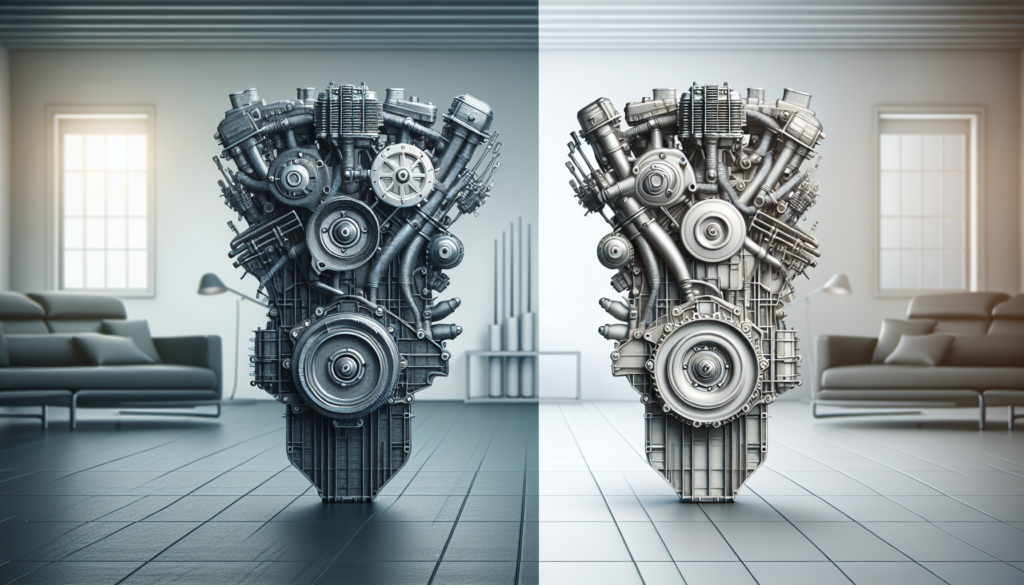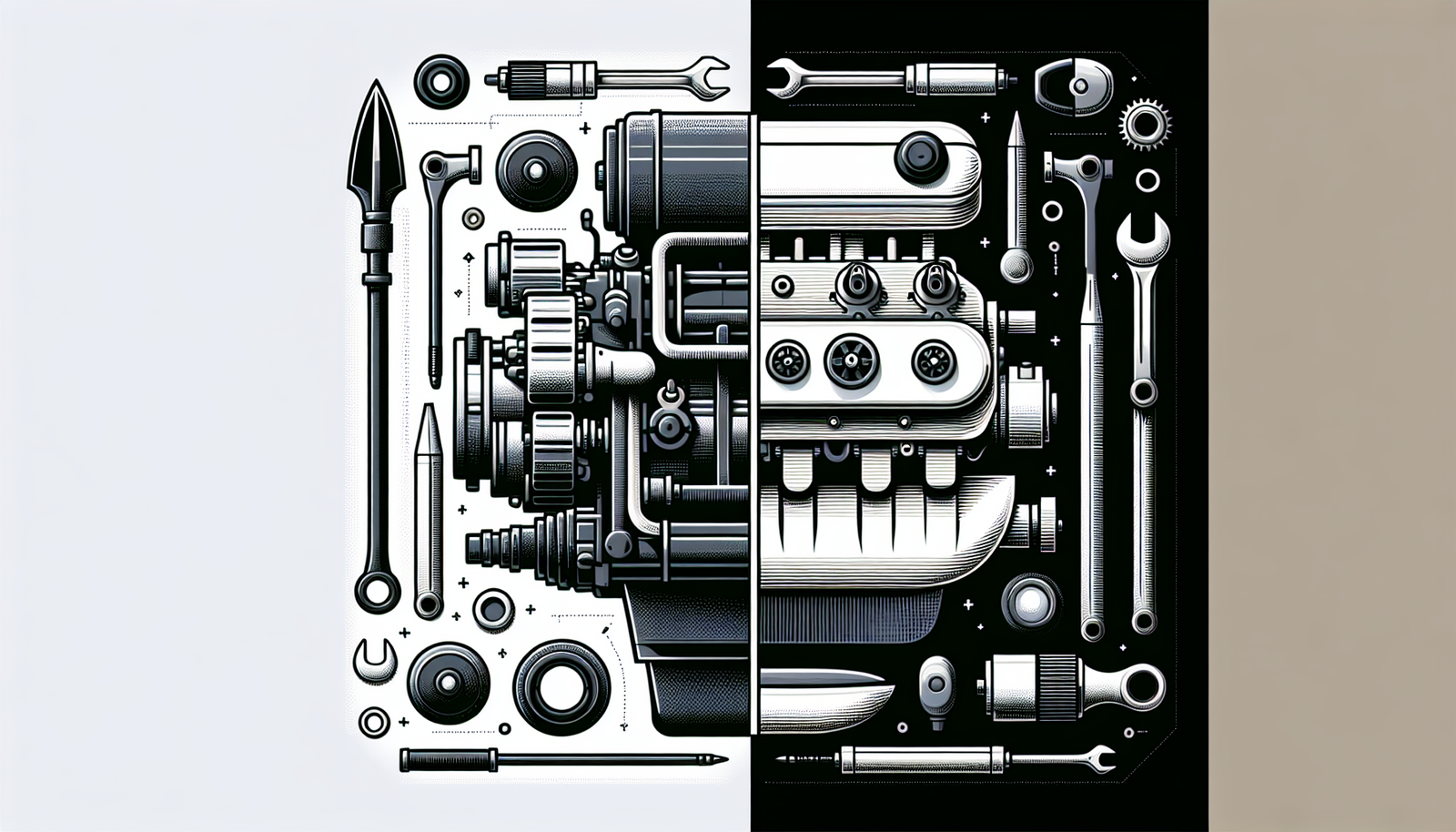In the world of boating, choosing between a 2-stroke and a 4-stroke engine can be like navigating through treacherous waters. There’s a lot to consider, from fuel efficiency to engine longevity, and it can feel overwhelming. But don’t fret! Your journey to clarity starts here, as this article will chart a clear course through the choppy sea of motor technology, laying bare the advantages and disadvantages of both types of boat engines. So relax, sit back, and get ready to set sail on this voyage of discovery and decision-making in the world of marine engines.

Understanding the Basic Mechanisms
Before we dive deep into the comparison of 2-stroke and 4-stroke engines, let’s first understand their basic mechanisms. These engines largely differ on the ways they perform ther combustion process to convert fuel into motion.
Understanding the functioning of a 2-stroke engine
In a 2-stroke engine, a power stroke, which starts the movement of the piston, and an exhaust/intake stroke, which removes the used gases and inhales fresh air, happen consecutively in just one full revolution of the crankshaft. Because there’s a power stroke for every crankshaft revolution, 2-stroke engines are commended for their capability to maintain consistent power. Although these engines are typically lighter and simpler, they are usually more powerful compared to 4-stroke engines of the same size.
Understanding the functioning of a 4-stroke engine
On the other hand, a 4-stroke engine does four steps: intake, compression, combustion, and exhaust. Each of these steps happens in a separate stroke. The power is generated at every second revolution of the crankshaft, thus the name 4-stroke. Although bulkier and complex, these engines are known for their longevity, efficiency in fuel consumption, and environmentally-friendly emissions.
Performance and Power of 2-Stroke vs 4-Stroke Engines
Let’s now delve into the performance attributes of these two engine types.
Thrust and acceleration comparison
When it comes to thrust and acceleration, 2-stroke engines lead the pack. They can provide twice the power for the same displacement because they fire once every revolution. This means that when you’re speeding up, the engine will respond more quickly, giving you better acceleration potential. However, 4-stroke engines are known for broader powerband and smoother operation.
Maximum power generation capabilities
As mentioned earlier, 2-stroke engines generate more power due to their twice-every-revolution firing. On the other hand, 4-stroke engines provide steadier and smoother power delivery because they run more slowly.
Overall speed performance
The superior speed performance of 2-stroke engines can certainly be advantageous under circumstances where higher speed is necessary. However, in general boating situations, the reliable and consistent speed performance of 4-stroke engines can be deemed more beneficial.
Fuel Efficiency and Economy
Fuel efficiency and economy play a great role in ongoing operational costs.
Fuel consumption of 2-stroke engines
Traditionally, 2-stroke engines have a reputation for being thirsty beasts. Their design usually leads to a lot of their fuel being wasted, leading to a higher fuel consumption rate compared to 4-stroke engines.
Fuel consumption of 4-stroke engines
In contrast, 4-stroke engines are more fuel-efficient. They compress the air and fuel mixture before ignition, leading to improved fuel-efficiency. This means that not only are you consuming less fuel, you’re also, therefore, spending less money on fuel over time.
Impact on overall cost of use
The higher fuel efficiency of a 4-stroke engine significantly impacts the overall cost of use. It’s worth noting that while 2-stroke engines may be cheaper initially, the amount of fuel they consume could eventually make them more expensive in the long run.
Environmental Impact
What about the environment? Let’s examine these engines from an ecological perspective.
Emission levels of 2-stroke engines
By design, 2-stroke engines typically emit more exhaust and unburned fuel into the environment, making them less eco-friendly.
Emission levels of 4-stroke engines
Meanwhile, 4-stroke engines, due to their working cycle and superior fuel efficiency, are known for cleaner emissions. Fewer pollutants are emitted, which reduces the engine’s environmental impact.
Discussion on more eco-friendly choice
With less unburned fuel and fewer pollutants, it’s clear that 4-stroke engines are a more ecologically-sensitive choice when it comes to boat engines.

Maintenance and Durability
Both 2-stroke and 4-stroke engines entail different needs when it comes to maintenance and durability.
Frequency and complexity of maintenance for 2-stroke engines
In terms of maintenance, a 2-stroke engine has less complexity due to fewer parts, making it generally cheaper and less time-consuming to maintain.
Frequency and complexity of maintenance for 4-stroke engines
On the flip side, 4-stroke engines have more parts and complex systems that require professional servicing more frequently. This maintenance might prove to be more costly in the long run.
Comparison of life expectancy
In terms of life expectancy, 4-stroke engines typically last longer due to their slower speed and better lubrication system. This makes them a more durable choice compared to their 2-stroke counterparts.
Ease of Use and Operation
The way you use and operate your boat engine plays a significant role in your overall boating experience.
Operation of 2-stroke engines and its benefits/drawbacks
There’s no denying that 2-stroke engines are often easier to handle. Their lightweight design and straightforward operation make them user-friendly and ideal for smaller watercraft. However, the downside is their high fuel consumption rate and increased emissions.
Operation of 4-stroke engines and its benefits/drawbacks
On the other hand, 4-stroke engines are a bit more complex but also more flexible for larger boats, and offer smoother and lower noise operation. Though their higher weight, increased maintenance, and higher initial costs present certain drawbacks.

Noise and Vibration Levels
Noise and vibration are other important factors that affect ride comfort and can impact everyone’s enjoyment of a day out on the boat.
Noise production of 2-stroke engines
2-stroke engines are known to be noisier due to their aggressive firing pattern. They also have more vibrations, leading to noisier operation and less comfort during long boat rides.
Noise production of 4-stroke engines
Conversely, 4-strokes are generally more silent runners. Because of their slightly slower revving and firing pattern, they tend to be quieter and produce less vibration, making the ride smoother and more comfortable.
Weight and Size Considerations
This is a critical factor that impacts the balance, performance, and the overall space of your boat.
Weight and size of 2-stroke engines
2-stroke engines are generally smaller and lighter. The lesser weight makes them a suitable choice for smaller boats where weight and space are a concern.
Weight and size of 4-stroke engines
Conversely, 4-stroke engines are bulkier and heavier, which can affect boat balance. They are usually installed in larger boats where weight isn’t as critical, and ample space is available.

Cost of Ownership
When buying a new engine, the purchase price is just one part of the equation. True cost of ownership extends far beyond the initial cost.
Initial cost of 2-stroke engines
2-stroke engines are generally cheaper to purchase initially. Their simpler construction and fewer parts make them less expensive to produce, which translates into a lower purchase price for the consumer.
Initial cost of 4-stroke engines
4-stroke engines, on the other hand, have a higher initial cost due to their complexity and the materials needed for production. However, their superior fuel efficiency and longevity can make them cheaper in the long run.
Overall cost taking into account maintenance, fuel use, and lifespan
While the initial cost of a 2-stroke engine might win out, other factors must be considered. Fuel use and maintenance over time, as well as the lifespan of the engine, can all contribute to the total cost of ownership. Generally, despite the higher initial cost, a 4-stroke engine could be cheaper in the long run.
Choosing the Right Boat Engine
Finally, you need to choose the right boat engine for you. There isn’t a ‘one size fits all’ solution when it comes to picking the right kind of engine for your boat.
When to opt for a 2-stroke engine
If weight and initial cost are your primary concerns, and you’re planning to use your boat for short bursts of high-speed fun, then a 2-stroke engine might be your best bet.
When to opt for a 4-stroke engine
On the other hand, if you’re looking for an engine that offers better fuel efficiency, lower emissions, and more consistent power over extended periods, then a 4-stroke engine is likely the best choice for you.
Factors that influence decision making
Your decision should be dictated by various factors including your budget, boating needs, performance expectations, environmental concerns, and maintenance considerations. Before making a decision, be sure to weigh all of these factors and choose the engine that will give you the best overall boating experience while ensuring efficiency and reliability for the long haul.


[…] for their power, fuel efficiency, low emissions, and easy maintenance. They also offer a unique direct injection system for improved performance, making them a preferred choice for numerous […]